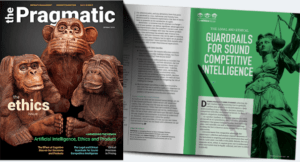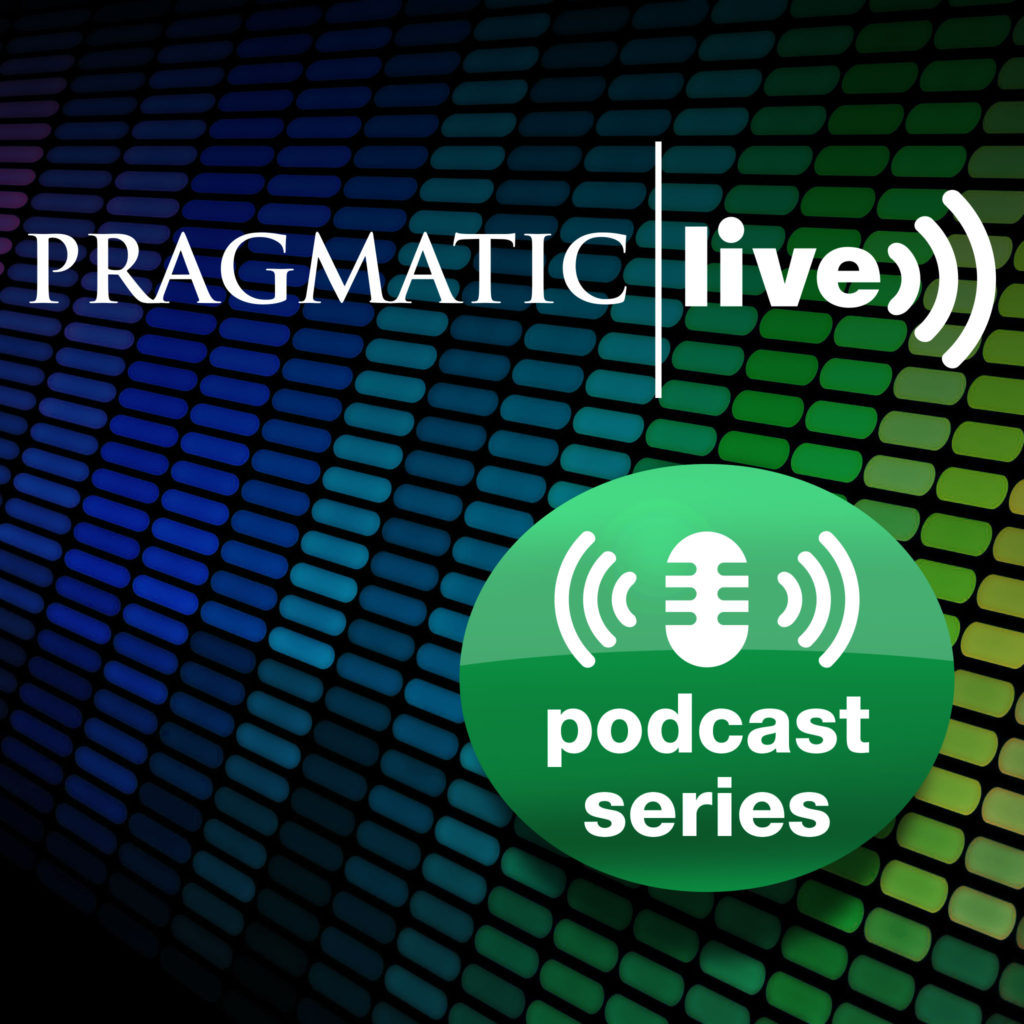
 Gone are the days of pushing technology initiatives out to a future date or worse yet, off completely. It’s all about now — what’s happening now (and not happening) in the technology world and how businesses can amplify their processes and deliverables with those technologies. In fact, technology is a key responsibility of every modern-time business.
Gone are the days of pushing technology initiatives out to a future date or worse yet, off completely. It’s all about now — what’s happening now (and not happening) in the technology world and how businesses can amplify their processes and deliverables with those technologies. In fact, technology is a key responsibility of every modern-time business.
This is an invitation from our team to yours. Get to know what technology means at Anova and how that connects you to – our prospect, our client, or someone on a quest to learn more about our research programs one step at a time – through an interview with Anova’s tech lead, Jamie Zielinski.
Anova: It is one thing to use technology, but you help build and deploy it. What do you like about technology?
Jamie: What I love about technology is that it is constantly changing. I know that is probably frustrating for most people and certainly a huge responsibility for companies to keep up with, but I love it. It keeps me on my toes, and every day I learn something new. There is a constant evolution happening and technologies are always improving for the better. I love discovering or helping to develop technology that can make our lives easier and our business run more efficiently. That is beyond satisfying.
Anova: How has technology evolved at Anova over the past few years?
Jamie: Technology has helped make Anova more efficient. Years ago, we had many manual processes in place. We knew we needed to streamline our procedures, especially as we grew. We went into a major discovery phase. We thought through our needs as a business as well as through our clients’ needs. That process peaked with the development and launch of Anova’s own proprietary system named Viewpoint. We learned a ton about cloud systems, cybersecurity, frameworks, coding and dashboard creation along the way. Today, we are constantly looking for ways to improve the client experience whether that be modernizing the look and feel of Viewpoint, creating new competitive analysis reports, or updating the code and framework to the latest and greatest versions available.
We are fortunate to work with some talented programmers who turn our ideas into reality. I am excited to continue to work with them to evolve our technology to not only please our clients but also to help our analysts synthesize data even quicker to continue to provide actionable feedback in real-time.
Anova: You mention Viewpoint, can you share more about this technology?
Jamie: Absolutely. Viewpoint is the backbone technology of what we do. The technology meets internal and external needs. It stores, manages, and processes all the data Anova uses for its research. Whether we are conducting win/loss, departed client or client satisfaction projects for a client, we use Viewpoint for every step along the way.
Viewpoint is our interview scheduling system, our survey creation tool, and the database where all of our interview responses are stored. We initially created the system for an internal view of our client programs and expanded it to have an external, client-facing component. We launched myView – the client dashboard which allows our clients to see both quantitative and qualitative data in real-time. We have expanded the reporting on a continual basis, and clients are able to access benchmarking results, competitive intelligence reporting, strengths and weaknesses aggregation, client satisfaction scores, data exports, and much more.
Anova: What are some of your personal favorite apps or services?
Jamie: There are so many! Life is beyond easy nowadays. Within the last week, I have pre-ordered every morning coffee, had my groceries delivered, paid for my parking, tracked my steps, listened to podcasts, and read a book all via apps on my phone. I have an app for everything! But my hands down favorite is Instagram, and it has been for a long time. I enjoy photography and so many contributors take amazing travel and animals photos. I have a weakness for both. It’s great to have a resource you can turn to that instantly puts a smile on your face and brightens your day.
 It’s August now – the dog days of summer. Don’t let your sales be beat by the heat. Even though lots of people are on vacation, the office may be quieter, and productivity slower, there is no better time than now to prep for a strong year-end push.
It’s August now – the dog days of summer. Don’t let your sales be beat by the heat. Even though lots of people are on vacation, the office may be quieter, and productivity slower, there is no better time than now to prep for a strong year-end push.
Between now and Labor Day, you have the opportunity to get out ahead of everyone else. Prep. Review. Learn. And come September 5th, you’ll have a clear path for what’s coming over the final four months of the year.
Weed the Garden
Does your pipeline need some weeding? Most likely it does. Spend time reviewing your pipeline and really qualify your opportunities. Who are the prospects that you have the best chance of closing by year-end? Which prospects have been carried quarter-over-quarter with little progression? And finally, which prospects are taking resources, but are not real opportunities at all? By knowing your real opportunities and letting go of those that are dragging you down, you will elevate your sales activity these final months of the year and give yourself more power to connect with your true buyers.
Preparation, Preparation, Preparation
Now that you know your best qualified prospects, ask yourself, “What can I do now while it is quiet to get ready for action in September?” Being proactive can be the key to getting ahead of the competition during a busy sales season. Know who you are going to reach out to and when, and put that information in your calendar including specific details about your outreach. If you prepare for those communications now, you will be freed up from having to do it next month or even later. Draft the email and hit “save.” You’ll be ready to hit “send” next month.
Back to School
The dog days of summer are great days for you to learn. Maybe your company launched a new service model or product enhancement that you need to better understand. Perhaps there is new marketing material that you simply have not had time to embrace yet and learn. Sales training is a great motivator because its sole purpose is to help you sell and service better than you have been. Going into the final months of the year is an opportune time to get motivated and brush up on skills that could use some bettering.
Don’t Forget Upsells
If you have a service team or account managers in your organization managing your prospects-now-turned-clients, they could be less busy than usual as well. Reach out to them and see what’s happening with those clients. Maybe there are upsell or cross-sell opportunities you can identify together to explore in Q4. Developing collaborative relationships with those servicing and managing existing clients can lead to happier customers, more stable reoccurring revenue, and ongoing upsell opportunities.
Envision December 2019
Where do you want to be at the end of this year? Take the time now to envision what your sales success will be at year end. What do you need to do between now and then to get there? It is not too soon to be thinking of these things. In fact, these quiet, hot days of summer offer the greatest space for you to envision, prep, and focus on your end game.
 All Anova research programs culminate in a key phase of the client engagement: the presentation. Whether it be an interim program report or a full aggregate presentation at the program’s completion, the delivering of feedback, trends, and findings is a marque moment in the relationship between Anova and its clients. Learn about how Anova approaches these presentations, and positions itself as a strategic partner to clients, in a conversation with Zach Golden, Consultant at Anova:
All Anova research programs culminate in a key phase of the client engagement: the presentation. Whether it be an interim program report or a full aggregate presentation at the program’s completion, the delivering of feedback, trends, and findings is a marque moment in the relationship between Anova and its clients. Learn about how Anova approaches these presentations, and positions itself as a strategic partner to clients, in a conversation with Zach Golden, Consultant at Anova:
Anova: Can you share more about moving from a vendor to a partner? How does that happen?
Zach: Being a partner with our client is a critical part of Anova’s engagement philosophy. We want to be more than a research vendor to our clients, no matter what program is being administered or how long we’ve been engaged. We know our clients expect a lot out of us, and we do everything in our power to meet and exceed those expectations. In our experience, when we can do that, the relationship becomes more of a two-way street where Anova and the client are mutually committed to the program’s success.
Anova: How often do clients review aggregate win / loss findings?
Zach: It really depends on the business and the nature of the program. For some clients, win / loss is used as a diagnostic tool. For example, maybe a new head of sales wants 30 or 40 interviews completed to understand prospect perceptions and to gauge how well the sales team they inherited is performing before changing anything. In a case like that, speed to value is critical, and so it makes more sense to focus on hitting that final number of interviews before analyzing any aggregate results. For clients who have ongoing programs, we’ve found that clients usually get the most value from having ongoing readouts with key personnel at the managerial level either monthly or quarterly, and then bringing in Anova to present to executives twice a year.
Anova: What can an executive expect from an Anova presentation?
Zach: An Anova presentation provides value in a few different ways. First and foremost, we are delivering unfiltered prospect perceptions back to the client. The presentation will give an overview of what prospects are saying on an open-ended basis about the client, such as what did they perceive to be our client’s strengths, and where our clients need to improve. But we don’t just want to dump data at our client’s door. We spend a lot of time crafting a narrative of why our clients are winning and losing, and will focus the remainder of the presentation on telling that story– diving deeper into the areas that are driving prospect decisions, and making sure our clients a) understand the data and b) know what the path forward is to acting on the feedback.
Anova: How do you help clients turn the feedback into action?
Zach: A couple of different things come to mind. Some clients look for us to make recommendations, and we do our best to point out where they need to invest more resources based on what the feedback is, or how the client compares to our benchmark. Other clients view us as a forcing function for senior leadership teams to review data and make strategic plans. The read-out of win / loss findings is the perfect opportunity for executives to debate what areas of the business need improvement to be more competitive.
No matter which way the clients sees us, we are there to be strategic partners, to know their business to the best of our ability, and to understand how the win / loss results apply to the business moving forward. Having data is one thing, but leveraging that data to drive change and improve strategy is where the real value is realized. We care about that part a lot.
Anova: Can you give me an example of this?
Zach: This is good timing! Earlier this week our team was on-site at a client’s office in New York. There were some client team members in the room with us, and a few others on the phone following on their screens. As a group we spent 90 minutes engaging in conversation, but only about 20 or 30 minutes of that was Anova presenting. We would introduce a key finding, and the client would discuss and debate. Our role was less as a presenter and more of a mediator, directing the conversation to different topics and bringing in relevant data to help the executives have a more informed dialogue when needed. It was a great example of clients getting value from having a discussion of where to prioritize resources in the organization with complete reassurance, because we were providing independent, third-party data collected in our research. Our client in this case trusted we knew the results and the program’s goals, and we were able to partner with them in those discussions.
 In the most recent issue of The Pragmatic Magazine, published by The Pragmatic Institute, Anova Engagement Manager Zach Golden authored an article providing guidance for organizations just beginning to beginning a win / loss program. Below is an excerpt from the article:
In the most recent issue of The Pragmatic Magazine, published by The Pragmatic Institute, Anova Engagement Manager Zach Golden authored an article providing guidance for organizations just beginning to beginning a win / loss program. Below is an excerpt from the article:
Do: Institutionalize the research. Getting buy-in throughout the organization won’t happen overnight. Share program goals up front to establish realistic expectations. Be sure to note that short-term goals are to figure out how to run a program (see above operational goals), while long-term goals include using the aggregate data for strategic planning. Also, be sure to communicate to your organization that the program is meant to be a learning and coaching tool, and there’s no reason to be opposed to the feedback. Make it clear that the program isn’t meant to point out people’s mistakes. Be thoughtful about who accesses the initial interviews and encourage those people to read the transcripts with open minds. As more interviews are completed, people will become more accustomed to the research and begin to want more.
Don’t: Expect Immediate Results. Expecting win/loss research to immediately deliver transformational insights is a simple way to put unnecessary pressure on the program. The early stages of a win/loss program are about gaining operational efficiencies and trusting that the value of the research will be revealed as time goes on and more feedback is captured. A significant part of win/loss value comes from seeing how results change and improve over time.
To read the full article, click here and to read the whole magazine for even more insights on a wider range of topics click here.
 Maybe you are a new salesperson looking to learn the ropes. Or perhaps you are a seasoned salesperson committed to continuous self-improvement and growth. In either case, learning is in your path.
Maybe you are a new salesperson looking to learn the ropes. Or perhaps you are a seasoned salesperson committed to continuous self-improvement and growth. In either case, learning is in your path.
Sales training aims to set salespeople up for success. It provides an individual sales representative a strong sales foundation and proven, time-tested sales tactics and strategies. In fact, U.S. organizations invest $70 billion annually on training, which comes out to an average of $1,459 per salesperson (Harvard Business Review, June 2017).
There are clearly a lot of resources devoted to helping salespeople improve, but how do you know if it is working or not?
In order to see if what you are learning (and hopefully applying) is working or not, you need to know more than what your win rate is. You need to find out why you are winning and losing.
Win / loss research provides you exactly that information, and what needs to be done to improve your own performance as well as your company’s overall presentation of its products and services. The customized, post-decision interview used in win / loss gives you the candid feedback you need to make competitive adjustments to your sales approach and strategy. Is what you learned in your sales training working?
A win / loss program can help you:
The bottom line is this: Learning is never really done as long as products, services, sales teams, and competitors are always changing. Making win / loss part of your personal sales process is the ongoing sales training that makes a difference.

This past August, Rich was interviewed by Pragmatic’s VP of Marketing Rebecca Kalogeris on Why to Do Win / Loss. Rich and Rebecca recently connected to continue their conversation and focused the discussion on best practices for How to Do Win / Loss. In the episode, Rich talks about how organizations can implement and operate a best-in-class win / loss program. The podcast is available on the Pragmatic Marketing website as well as the iTunes Podcast Library.
 Anova’s thought leadership was recently featured in two Pragmatic Marketing publications. This summer’s edition of Pragmatic Marketer Magazine had the theme of “Bridging the Gap with Sales”. Anova Consultant Zach Golden wrote an article about how organizations can successfully implement a win / loss program to ensure sales teams are gathering actionable feedback from their prospects.
Anova’s thought leadership was recently featured in two Pragmatic Marketing publications. This summer’s edition of Pragmatic Marketer Magazine had the theme of “Bridging the Gap with Sales”. Anova Consultant Zach Golden wrote an article about how organizations can successfully implement a win / loss program to ensure sales teams are gathering actionable feedback from their prospects.
If you like podcasts and have 30 minutes, be sure to also check out the interview with Anova’s President Rich Schroder, who spoke with Pragmatic’s VP of Marketing, Rebecca Kalogeris, about win / loss best practices and the future of the industry.
Check out the article by Zach Golden here and the podcast with Rich Schroder here.
 “The best things in life are free.” Do you think this famous American proverb was talking about webinars? Surely, not, but we are!
“The best things in life are free.” Do you think this famous American proverb was talking about webinars? Surely, not, but we are!
Webinars are awesome. When done right, they are 1) free, 2) educational and 3) entertaining. What’s not to love?
Anova is kicking off a series of webinars that begins next month. We believe so much in the value of Win Loss Research that we want to educate anyone who wants to listen.
Maybe you’ve heard of Win Loss but really have no idea what it is or how it works. Maybe you’ve been asked to look into Win Loss or competitive intelligence research and don’t know where to start. Perhaps you’ve been wanting to implement Win / Loss internally at your organization and need a way to start that conversation in your own office. If you are nodding your head at any of these, come join us!
Our upcoming webinar is free education specifically designed for you. The founder and CEO of Anova, Rich Schroder, will teach you about the key principles – the ABC’s if you will – about Win Loss analysis & research in an interactive session. You’ll learn how this type of research will help you:
Join us! You can click here to register and learn how Win / Loss analysis will help you win more business!
We continue our series From Our Team to Yours with a conversation with Senior Research Analyst Jack Ryan. Learn from Jack as he describes aspects of Anova’s consultative approach and analytical methods for finding trends in aggregate data sets across win / loss research.
Anova: Jack, we are coming up on halfway through 2018 already. So far this year, what are some things you are seeing in win / loss reports that clients should be aware of?
Jack: Making product-related parallels can be difficult because Anova does work across so many unique companies and verticals. Still, there are some sales-related things that are consistent across all the programs right now. Sales skills such as differentiation, needs analysis, and value prop articulation are traits that any sophisticated B2B sales team will need to have, no matter what they are selling.
Anova: Let’s talk about those three sales traits. Have you noticed any trends in reports thus far this year you can share?
Jack: I was actually just working on a benchmarking study about differentiation. One stat that stuck out to me was across all our clients, satisfaction with the winning vendor’s ability to differentiate is about twice as high as satisfaction with the 2nd place provider’s ability to differentiate. And that difference is more pronounced in mature industries where the product is relatively commoditized.
Anova: So, is sales feedback one of the first things you look at in a data set?
Jack: Not necessarily. My typical process is to understand what is most top of mind for our clients’ prospects or clients. In win / loss interviews, that means looking at and getting a really good understanding of the responses to “what were our client’s top strengths” and “what were our client’s top areas for improvement?”. Grasping what stood out most about our clients, both positively and negatively, usually gives me an idea of where to look next in order to tell the story. Sales is almost always part of that story, and those three areas -differentiation, needs analysis, and value articulation- usually play a key role in that narrative.
Anova: You say you want to “tell the story”. What does that mean from your perspective?
Jack: That’s ultimately why most of our clients hire us. Each interview tells the individual story of a single prospect’s unique decision. Then when there is an aggregate data set, it is on Anova to be able to synthesize all those situations and come up with the narrative for our clients of why they are winning and losing business, and ultimately, how they can win more. We don’t want to just list off a series of statistics that have no meaning. For our work to have an impact on the client, the results and subsequent takeaways need to be articulated in a way that ties different data points together and makes sense.
Anova: Do you have an example of a recent client you were able to tell a story to?
Jack: Definitely. We just finished a project for a software client in the network security space. The client recently pivoted to focus on prospects in a few key verticals and was looking for guidance on how their sales approach and product was being perceived in those segments. We had the kickoff and learned about the different hypotheses the client had for why they were losing business. When it came time to analyze the data, instead of just giving a rundown of findings, we related the findings back to the initial hypotheses of the client. For instance, instead of saying product, price, and brand were the top three reasons the client was losing business, we put the results into context by giving our interpretation of whether product, price, and brand were overstated or understated as hypotheses for losing business. Comparing the actual data to the client’s initial guesses was an impactful way to tell a story and help the findings resonate with the client.
Anova: That’s very helpful. Thanks Jack!
 Where would a market research company like Anova be without its people? What possible insights and strategies could such a consulting firm offer to its clients without the bedrock of data, stats, and open-ended feedback? The truth is: nowhere.
Where would a market research company like Anova be without its people? What possible insights and strategies could such a consulting firm offer to its clients without the bedrock of data, stats, and open-ended feedback? The truth is: nowhere.
Whether it be a win / loss program, a departed client program, or client satisfaction program, a key element to Anova’s success it is Executive Interviewer team. In fact, it is probably Anova’s main differentiator in the competitive marketplace. Anova’s interviewers know what they are doing, and they do it better than most.
This is an invitation from our team to yours. Get to know what the Executive Interviewer experience means to you – whether you are our prospect, our client, or just someone on a quest to learn more about Anova – through an interview with one of Anova’s Executive Interviewers, Jeannine Kulsick.
Anova: First, you’ve been with Anova as an Executive Interviewer for seven years. How did you get into this role?
Jeannine: I was introduced to win / loss research while at my previous company and was the consumer of the research. It made such an impact on our business and culture, and ten years ago the idea of win / loss was not entirely mainstream. It was like a little a secret advantage we had over our competitors. I was so intrigued by the work, I made a move from consuming the research to leading the research.
Anova: What skills come into play as an Executive Interviewer?
Jeannine: At Anova, this isn’t about calling someone a thousand times and trying to get through the questions as quickly as possible. There is a certain art to it. To be successful in this role for our clients, I must be a few different things at the same time: accessible and easy to get along with, understanding of people’s time and perspectives, knowledgeable about the industry I am researching within, and competitive with myself to get a great result. I also must be curious. At Anova, this is not about a flat Q&A format. We have to ask beyond the initial question to get to the really good stuff. Getting there is all about curiosity.
Anova: It sounds like probing is a big part of the success. Tell me more about that part.
Jeannine: Yes, that’s the challenging part. We have an interview guide that is negotiated with our client and as part of the program’s kick off, there is a lot of knowledge transfer and training around the program’s goals. Once engaged with an interviewee, as an Executive Interviewer, I am always looking for that next level – the details, the specifics, and the story. I may ask one question that leads to four or five more. It is my job to drill down on the critical aspects of what was important to our client, but also what was important to the prospect. When I get this kind of feedback for our clients, I know it’s a job well done.
Anova: What do you learn from your teammates? The other Executive Interviewers?
Jeannine: So much. We have all walked the walk and talked the talk, just from different perspectives. My colleagues come from the spaces and markets Anova partners with, and bring anywhere from 10 to 30+ years of experience. There’s a lot of knowledge in-house on our team and we are always sharing with each other. It helps deliver better research, really. We’ve done the presenting, we’ve serviced clients, we’ve had to explain why an important client left for a competitor, we’ve journeyed through our own long sales cycles. I think having these perspectives encourage us to think about what we can do to help our clients learn about what they are doing (or not doing!).
***
We extend an offer to continue this conversation. In our next From Our Team to Yours blog, get to know lessons and perspectives from one of Anova’s Analysts.